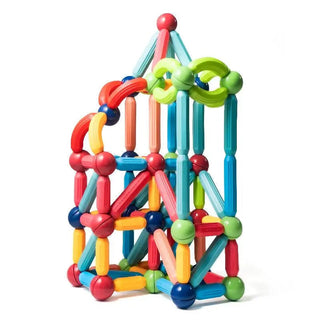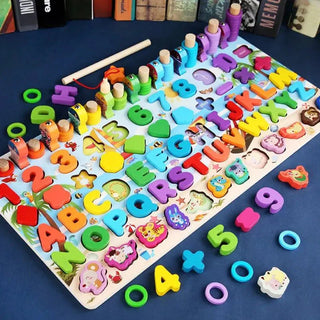RC circuits are fundamental components in the world of electronics, often used for filtering, timing, and signal processing. Understanding the rc circuit differential equation is key to mastering how these circuits behave under various conditions. This guide will break down the essential concepts, derivation, and real-world applications of the rc circuit differential equation, making it easier for you to grasp the underlying principles and their practical uses.
Key Takeaways
- RC circuits consist of resistors and capacitors, which determine how voltage and current behave over time.
- The rc circuit differential equation is derived using Kirchhoff's voltage law, which helps analyze circuit behavior.
- Transient and steady-state responses are crucial for understanding how circuits react to changes in voltage and current.
- Numerical methods like Euler's and Runge-Kutta can be used to solve the rc circuit differential equation effectively.
- Common mistakes include miscalculating time constants and neglecting initial conditions, which can lead to incorrect analyses.
Fundamentals Of RC Circuits
Basic Components of RC Circuits
Okay, so let's break down what makes up an RC circuit. It's pretty straightforward. You've got two main players: a resistor (R) and a capacitor (C). The resistor, as the name suggests, resists the flow of current. Think of it like a narrow pipe in a water system – it restricts how much water can flow through at any given time. Resistors are measured in ohms (Ω). The capacitor, on the other hand, stores electrical energy. It's like a little rechargeable battery. Capacitors are measured in farads (F).
- Resistors: Limit current flow.
- Capacitors: Store electrical energy.
- Voltage Source: Provides the energy to the circuit.
Understanding Voltage and Current
Voltage is the electrical potential difference, kind of like the pressure that pushes electrons through the circuit. It's measured in volts (V). Current is the flow of electrical charge, measured in amperes (A). In an RC circuit, the voltage across the capacitor and the current flowing through the resistor are constantly changing, especially when you first turn the circuit on or change the input voltage. The relationship between voltage and current in a resistor is defined by Ohm's Law: V = IR. Understanding how voltage and current behave over time is key to understanding RC circuits.
Kirchhoff's Laws in RC Circuits
Kirchhoff's Laws are super important for analyzing any electrical circuit, including RC circuits. There are two main laws:
- Kirchhoff's Current Law (KCL): This law states that the total current entering a junction (a point where multiple wires meet) is equal to the total current leaving that junction. Basically, what goes in must come out.
- Kirchhoff's Voltage Law (KVL): This law states that the sum of all the voltages around any closed loop in a circuit must equal zero. Think of it like a roller coaster – if you start at one point and go all the way around the track, you end up back at the same height (zero net change in potential energy).
Applying KVL to an RC circuit allows us to write an equation that relates the voltage across the resistor, the voltage across the capacitor, and the source voltage. This equation is the foundation for deriving the RC circuit differential equation, which we'll get into later. It's all about understanding how these voltages interact within the closed loop of the circuit.
Deriving The RC Circuit Differential Equation
Applying Kirchhoff's Voltage Law
Okay, so let's get into the nitty-gritty of how we actually come up with the differential equation that governs an RC circuit. It all starts with Kirchhoff's Voltage Law (KVL). Remember that one? Basically, it says that the sum of all the voltages around any closed loop in a circuit has to equal zero. Seems simple enough, right?
In an RC circuit, we've got a voltage source (let's call it V), a resistor (R), and a capacitor (C), all connected in series. So, following KVL, the voltage across the resistor (VR) plus the voltage across the capacitor (VC) must equal the source voltage (V). That's our starting point. We can express this mathematically as:
V = VR + VC
Now, we need to express VR and VC in terms of current (I) and capacitance (C), respectively. Using Ohm's Law, we know that VR = I * R. And the voltage across a capacitor is VC = Q / C, where Q is the charge stored on the capacitor. So, we can rewrite our equation as:
V = I * R + Q / C
This is a good start, but we need to get everything in terms of a single variable, and that's where the relationship between current and charge comes in. Current is the rate of change of charge with respect to time, meaning I = dQ/dt. Substituting this into our equation, we get:
V = (dQ/dt) * R + Q / C
And that's pretty much the foundation for our differential equation. We've related the voltage source to the rate of change of charge and the charge itself. Now, let's clean it up and put it in a more standard form.
Formulating The Differential Equation
Alright, so we left off with the equation: V = (dQ/dt) * R + Q / C. To get this into a more recognizable form of a differential equation, we want to isolate the derivative term and get everything else on the other side. Let's rearrange things a bit. First, divide the entire equation by R:
V/R = dQ/dt + Q / (RC)
Now, this is a first-order linear differential equation. It tells us how the charge Q on the capacitor changes over time in response to the voltage source V. You might see it written slightly differently depending on the context, but this is the core equation we'll be working with. Sometimes, people prefer to work with current instead of charge. Since I = dQ/dt, we can differentiate the entire equation with respect to time to get an equation in terms of current. However, for solving the equation, the form above is often more straightforward.
Solving The Differential Equation
Okay, we've got our differential equation: V/R = dQ/dt + Q / (RC). Now, how do we actually solve it to find Q(t), the charge on the capacitor as a function of time? There are a few ways to tackle this, but one common method is using an integrating factor. This might sound scary, but it's a pretty standard technique for solving first-order linear differential equations. The integrating factor is e^(t/RC). We multiply both sides of our equation by this factor:
(V/R) * e^(t/RC) = (dQ/dt) * e^(t/RC) + (Q / (RC)) * e^(t/RC)
The left side is just a function of time multiplied by a constant. The right side, however, is the derivative of (Q * e^(t/RC)) with respect to time. This is the magic of the integrating factor! So, we can rewrite the equation as:
(V/R) * e^(t/RC) = d/dt (Q * e^(t/RC))
Now, we can integrate both sides with respect to time. The integral of a derivative is just the original function, so we get:
∫ (V/R) * e^(t/RC) dt = Q * e^(t/RC) + K
Where K is the constant of integration. Evaluating the integral on the left side gives:
V * C * e^(t/RC) = Q * e^(t/RC) + K
Now, solve for Q(t):
Q(t) = V * C - K * e^(-t/RC)
To find the constant of integration K, we need an initial condition. Let's assume that the capacitor is initially uncharged, meaning Q(0) = 0. Plugging this into our equation, we get:
0 = V * C - K
So, K = V * C. Substituting this back into our equation for Q(t), we get:
Q(t) = V * C * (1 - e^(-t/RC))
And that's it! This equation tells us how the charge on the capacitor increases over time. From this, we can find the current through the circuit using I(t) = dQ/dt:
I(t) = (V/R) * e^(-t/RC)
This shows that the current starts high and decays exponentially over time. Understanding the voltage and current is key to understanding the circuit.
Analyzing The Time Response
Transient Response of RC Circuits
Okay, so we've got our RC circuit differential equation. Now what? Well, we need to figure out what it means. That's where analyzing the time response comes in. The transient response is what happens when the circuit is first energized, or when there's a sudden change in voltage or current. It's the circuit's way of adjusting to the new conditions. Think of it like a rollercoaster starting up – there's a lot of action at the beginning before it settles into a steady ride. Understanding the transient dynamics is key to predicting how the circuit will behave in real-world applications.
- Initial voltage across the capacitor
- The value of the resistor
- The value of the capacitor
Steady-State Response
After the initial craziness of the transient response, the circuit eventually settles down into a steady state. This is where things become more predictable. In a DC circuit, the capacitor acts like an open circuit in steady state, meaning no current flows through it. The voltage across the capacitor will eventually equal the source voltage. It's like the rollercoaster reaching a flat section – smooth sailing from here on out. Analyzing the steady state helps us understand the long-term behavior of the circuit. You can model the circuit using a system of differential equations.
Time Constant and Its Significance
The time constant (τ) is arguably the most important parameter when analyzing RC circuits. It tells us how quickly the circuit responds to changes. It's defined as the product of the resistance (R) and the capacitance (C): τ = RC. A larger time constant means the circuit responds more slowly, while a smaller time constant means it responds more quickly. It's like the rollercoaster's brakes – a strong brake (small time constant) stops it quickly, while a weak brake (large time constant) takes longer. The time constant is used to determine the voltage and current at any given time. The governing equation is key to understanding the time constant.
The time constant represents the time it takes for the voltage across the capacitor to reach approximately 63.2% of its final value during charging, or to decrease to 36.8% of its initial value during discharging. This value is derived from 1 - (1/e) for charging and 1/e for discharging, where 'e' is the base of the natural logarithm (approximately 2.71828).
Here's a table showing how the voltage across the capacitor changes over time, in terms of time constants:
| Time (in τ) | Voltage (% of final value) |
|---|---|
| 0 | 0 |
| 1 | 63.2 |
| 2 | 86.5 |
| 3 | 95.0 |
| 4 | 98.2 |
| 5 | 99.3 |
Applications Of The RC Circuit Differential Equation
Signal Processing
RC circuits are actually pretty important in signal processing. They can be used to shape signals, filter out unwanted noise, and even create specific effects. The differential equation helps us predict how the circuit will respond to different input signals.
- High-pass filters let high-frequency signals pass while blocking low-frequency signals.
- Low-pass filters do the opposite, allowing low frequencies through and blocking high frequencies.
- RC circuits can also be used to create simple equalizers.
Filtering Applications
Filtering is where RC circuits really shine. They're used everywhere to clean up signals and isolate the parts we care about. Whether it's removing noise from an audio signal or isolating a specific frequency in a radio receiver, RC filters are doing the work. Understanding the differential equation lets us design filters with specific cutoff frequencies and attenuation characteristics. You can use a low-pass filter to remove unwanted noise.
- Noise reduction in audio systems.
- Power supply filtering to remove ripple voltage.
- Anti-aliasing filters in data acquisition systems.
Tuning Circuits
RC circuits can be part of tuning circuits, although they're more commonly associated with RLC circuits (which include an inductor). However, RC circuits can still play a role in frequency selection, especially in simpler applications. The differential equation helps us understand how the circuit responds to different frequencies, allowing us to design circuits that are more sensitive to a specific range. The RC circuit is a fundamental building block.
- Frequency selection in simple oscillators.
- Tone control circuits in audio amplifiers.
- Frequency compensation in feedback amplifiers.
RC circuits are used in many different applications. The differential equation that describes their behavior is a powerful tool for understanding and designing these circuits. By understanding the equation, you can predict how the circuit will respond to different inputs and design circuits that meet specific requirements.
Numerical Methods For Solving The Differential Equation
Euler's Method
Okay, so you've got this RC circuit differential equation, and maybe solving it analytically is proving to be a pain. That's where numerical methods come in! Euler's method is like the simplest way to approximate the solution. Basically, you take small steps forward in time, using the current value to estimate the next one. It's not super accurate, especially if your steps are big, but it's easy to understand and implement. Think of it like predicting the future by only looking at what's happening right now – you'll get a general idea, but probably miss some details.
Here's the basic idea:
- Start with an initial condition (voltage at time zero).
- Choose a small time step (delta t).
- Use the differential equation to calculate the slope at the current time.
- Estimate the voltage at the next time step using: V(t + delta t) = V(t) + slope * delta t.
- Repeat steps 3 and 4 until you reach the desired time.
Runge-Kutta Methods
Runge-Kutta methods are like Euler's method but on steroids. They're still about taking steps, but they use a weighted average of slopes at different points within each time step to get a more accurate estimate. The most popular one is the fourth-order Runge-Kutta (RK4), which is a good balance between accuracy and computational cost. It's more complex than Euler's method, but it gives you much better results, especially when dealing with circuits that change quickly. Imagine you're trying to predict the path of a race car – Euler's method is like guessing based only on the current speed, while Runge-Kutta is like considering how the driver is turning the wheel and adjusting the throttle.
Using Software Tools for Simulation
Let's be real, nobody wants to calculate this stuff by hand if they don't have to. Luckily, there are tons of software tools out there that can simulate RC circuits and solve the differential equations for you. SPICE simulators are industry standard, but there are also simpler tools like online circuit simulators or even using Python with libraries like NumPy and SciPy. These tools let you define your circuit, set up the simulation parameters, and then watch the voltage and current change over time. It's like having a virtual lab where you can experiment without blowing up any real components. You can even model differential equations modeling using these tools.
Using software tools is a great way to visualize the behavior of RC circuits and verify your analytical solutions. Plus, it's way faster than doing everything by hand, which means you can spend more time understanding the results and less time crunching numbers. Just remember that simulations are only as good as the model you put in, so make sure you're using accurate component values and a realistic circuit configuration.
Real-World Examples Of RC Circuits
RC Circuits in Audio Equipment
RC circuits are all over audio equipment. They're not just theoretical constructs; they're doing real work to shape the sound we hear. Think about the simple tone controls on a guitar amp or a stereo system. Those bass and treble knobs? Often, they're adjusting the cutoff frequency of an RC filter. These filters selectively attenuate certain frequencies, letting you boost the bass or cut the highs.
- Coupling Capacitors: These block DC voltage while passing the AC audio signal, preventing unwanted DC offsets from messing up the next stage of the amplifier.
- Tone Controls: As mentioned, these use variable resistors to change the filter's cutoff frequency, shaping the audio's frequency response.
- Noise Filtering: RC circuits can filter out unwanted high-frequency noise from power supplies or other parts of the circuit.
RC circuits are used to create equalization curves, which are specific frequency responses designed to compensate for deficiencies in recording equipment or listening environments. They're also used in preamplifiers to shape the signal before it gets to the main amplifier stage.
RC Circuits in Timing Applications
RC circuits are fundamental in timing applications. The predictable charge and discharge of a capacitor through a resistor makes them ideal for creating time delays and setting frequencies. A classic example is the 555 timer IC, which uses an RC circuit to generate precise time intervals. You'll find these timers in everything from simple flashing LEDs to complex control systems. The capacitor voltage determines the timing.
- Timers: The 555 timer IC uses an RC circuit to create time delays or oscillations.
- Sequencers: RC circuits can be used to create sequential events, where one event triggers another after a set delay.
- Pulse Generation: RC circuits can generate short pulses of voltage, useful for triggering other circuits.
RC Circuits in Signal Conditioning
Signal conditioning is all about preparing a signal for further processing. This might involve filtering out noise, amplifying a weak signal, or converting a signal from one form to another. RC circuits play a vital role in many signal conditioning applications. For example, they can be used to remove high-frequency noise from a sensor signal before it's fed into a microcontroller. The resistance circuit is key to this process.
- Low-Pass Filters: These remove high-frequency noise from a signal, allowing the lower frequencies to pass through.
- High-Pass Filters: These block low-frequency noise or DC offsets, allowing the higher frequencies to pass through.
- Integration: RC circuits can integrate a signal over time, which can be useful for measuring the average value of a fluctuating signal.
Common Mistakes In RC Circuit Analysis

Misunderstanding Time Constants
One of the most frequent errors in RC circuit analysis involves a shaky grasp of the time constant (τ). It's easy to just memorize the formula (τ = RC) without really understanding what it means. The time constant dictates how quickly the capacitor charges or discharges, and a misinterpretation can lead to wildly inaccurate predictions about circuit behavior.
- Forgetting that the time constant is in seconds if R is in ohms and C is in farads.
- Assuming a capacitor is fully charged or discharged after only one time constant.
- Not recognizing how changes in R or C affect the charging/discharging rate.
Ignoring Initial Conditions
Another common pitfall is neglecting the initial conditions of the capacitor. The voltage across a capacitor cannot change instantaneously. If you don't account for the initial voltage, your calculations will be off, especially when analyzing transient responses. For example, consider a circuit where the capacitor starts with a pre-existing charge. If you treat it as initially uncharged, you'll get the wrong answer. This is especially important in circuits that have been operating for a while before a change occurs.
- Assuming the capacitor is always initially uncharged.
- Not properly accounting for the voltage across the capacitor at t=0.
- Failing to consider the impact of initial conditions on the transient response.
Overlooking Component Tolerances
Real-world components aren't perfect. Resistors and capacitors have tolerances, meaning their actual values can vary from their stated values. Ignoring these tolerances can lead to discrepancies between your calculations and the actual circuit behavior. A 5% tolerance resistor might be significantly different than its marked value, and this difference can become important in sensitive applications. It's important to consider the impact of component tolerances on the overall circuit performance. You can use worst-case analysis to see how the circuit behaves with the most extreme component values. This is especially important in filtering applications.
It's easy to get caught up in the math and forget that real-world components have limitations. Always consider the tolerances of resistors and capacitors, and how these variations might affect your circuit's performance. This is especially important in designs where precision is key.
- Assuming components are always exactly their stated values.
- Not considering the impact of tolerance on circuit performance.
- Failing to perform worst-case analysis to account for component variations.
When working with RC circuits, many students make some common errors that can lead to confusion. One big mistake is forgetting to account for the time constant, which is crucial for understanding how the circuit behaves over time. Another frequent issue is not properly analyzing the charging and discharging phases of the capacitor. To avoid these pitfalls and improve your skills, check out more tips and resources on our website!
Wrapping It Up
So, there you have it. We’ve walked through the basics of the RC circuit differential equation and how it all fits together. It’s not just about the math; it’s about understanding how these circuits work in real life. Whether you’re tuning a radio or just trying to grasp the concepts, knowing how to set up and solve these equations is key. Remember, practice makes perfect. The more you work with these circuits, the clearer it will become. Don’t hesitate to revisit the examples and try your hand at solving them. Keep experimenting and learning, and you’ll get the hang of it in no time!
Frequently Asked Questions
What is an RC circuit?
An RC circuit is an electrical circuit that consists of a resistor (R) and a capacitor (C) connected together. It is used to store and release electrical energy.
How does voltage change in an RC circuit?
In an RC circuit, the voltage across the capacitor changes over time as it charges or discharges. This is determined by the time constant of the circuit.
What is the time constant in an RC circuit?
The time constant, denoted by the Greek letter tau (τ), is the time it takes for the voltage across the capacitor to reach about 63% of its final value after a change in voltage.
How can I solve the differential equation for an RC circuit?
To solve the differential equation of an RC circuit, you can use methods like separation of variables or integrating factors. You can also use numerical methods if the equation is complex.
What are some real-life applications of RC circuits?
RC circuits are commonly used in audio equipment, timing devices, and filters for signal processing. They help in shaping signals and controlling timing in various devices.
What common mistakes should I avoid when analyzing RC circuits?
Some common mistakes include misunderstanding the time constant, ignoring the initial conditions when solving the differential equation, and not accounting for the tolerances of the components used.




















